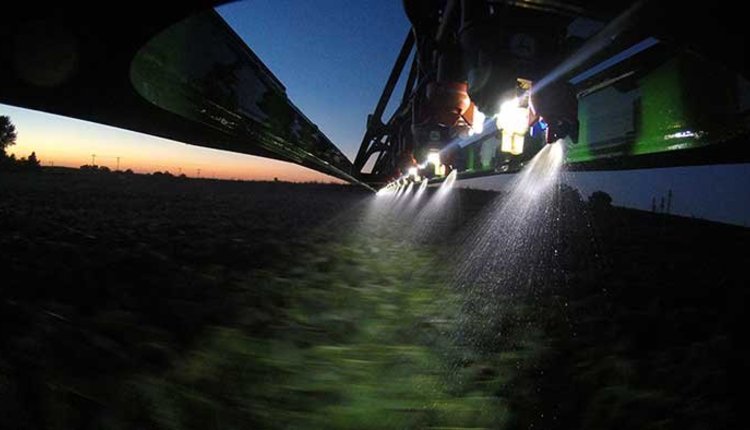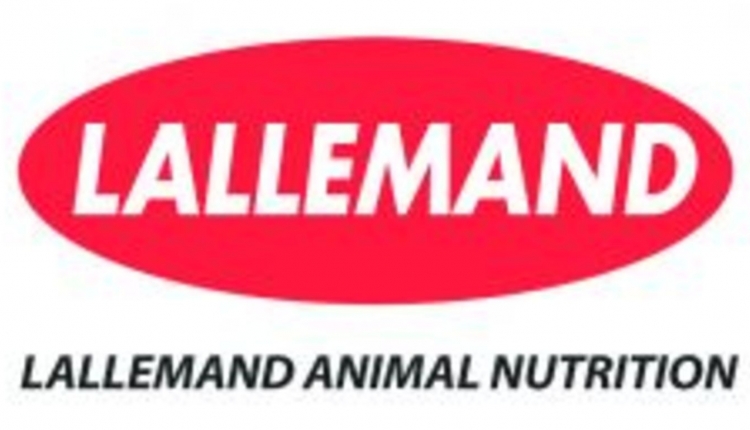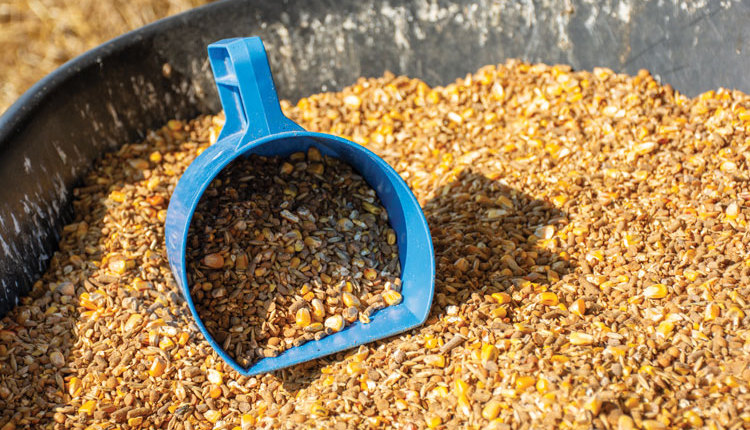The author is the principal in ANDHIL, LLC, a St. Louis-based consulting firm.
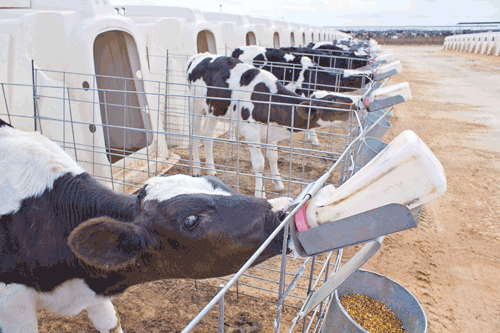
Review the four critical transition periods for your calves to ensure stress is minimized and they can meet their genetic potential.
During their first 2 to 3 months of life, we are seldom aware of the changes calves undergo on a day-to-day basis. These changes begin with the most impactful one - birth. While in utero, the cow provides the calf's environment: the provision of nutrients, an optimal body temperature, shelter from the elements and waste control.
There is a significant element, though, that the cow does not provide. In ruminants, there is no transfer of antibody proteins in utero from the cow to the calf. Ideally, you administer at least 3 to 4 quarts of high-quality colostrum (greater than 50 grams IgG/liter). This first feeding should occur within 1 to 4 hours after birth. It is essential to ensure colostrum is clean with no more than 100,000 cfu/ml total bacteria.
Colostrum contamination has emerged as a major insidious issue, not meeting the quality standards for 36 to 82 percent of samples taken in various field studies. In effect, feeding contaminated colostrum, or "bacterial soup," inoculates calves when they are most vulnerable.
Critical periods determine her future
Following birth, the next critical time period is the first two weeks of life. This is the period when most calf deaths will occur, primarily resulting from scours. This is not solely linked to the calf's environment and housing but also how contaminated were the colostrum and equipment used to harvest, transfer and feed it. Additionally, it is now critical to supply an adequate level of nutrients. More traditional two-time-per-day feeding programs do not allow the calf to grow to its genetic potential.
Calves that are not set up to double their body weight at the end of 2 months of life are also less likely to be healthy or effectively fend off health challenges. We now know calves that scour or have respiratory problems are impaired for life. Field studies found calves with a respiratory problem took an additional six months to become first-calf heifers.
As time progresses, the calf's digestive system has to undergo a major transition. Initially, nutrients are provided almost exclusively by the milk replacer or milk. As the calf grows, its appetite also grows. Providing a good texturized calf starter is now key.
Not all water is equal
Unfortunately, based on the 2007 NAHMS report, water is often not provided until calves are 2 to 3 weeks old. This limits calf starter intake and growth because there is a 4:1 ratio of water to dry matter intake.
Water should be in front of calves. But dirty water is a major deterrent to consumption. Too often this occurs due to lack of physical separation between water and starter containers. This reduces intake of both with an accompanying reduction in weight gain.
The third critical period is two weeks before and two weeks after weaning; "the weaning transition period." The time can be as important to a calf as the transition period is to the cow. Key relationships are depicted in the figure based on actual trials, including one done at the University of Illinois. First, note that even feeding 1.5 pounds daily of a 20 percent protein/20 percent fat milk replacer would not provide much more than 1 pound daily gain. On top of this, there is an imbalance created by a lack of protein relative to energy. Feeding more of a higher protein milk replacer is required to enhance the rate of gain and protein deposition.
Starter intake will commence slowly but then approximately double each succeeding week. Some may say, calves do not need starter for several weeks since their intake is so low for the first few weeks. But, if you wait to introduce starter, you ensure that the intake curve is not steep enough to be able to wean calves at 6 weeks of age.
The general scenario is that calves should be consuming 1 pound of starter daily in the week before weaning begins. In Week 2, one feeding or half of the milk replacer volume fed should be eliminated. Starter intake should double that week. During Week 3, milk would be eliminated. Starter consumption should double again to 4 pounds daily.
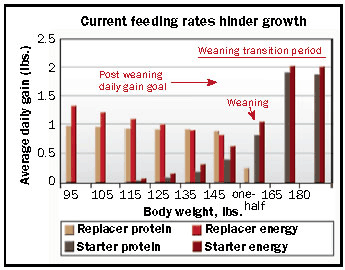
Keep postweaning group small
Daily gain should also step up to 1.8 to 2.0 pounds for that week until calves become first-calf heifers. During the fourth week of the weaning transition period, calves would consume 5 to 6 pounds of starter per day. Too often we cheat our calves down to one or fewer weeks postweaning. And then we move calves into a large group with a high forage TMR. Accumulated, there are too many changes at one time.
When calves are 2 months old, it is almost as if there is an unwritten rule that the time has come to be shifted into the first group. In a study at a large Idaho calf ranch, 480 calves were ranked by starter intake during the preweaned period. They were then allotted into groups of 20 by various rankings to minimize or accentuate variation based on their previous performance. Calves were then fed a 95 percent starter/5 percent alfalfa hay TMR. Intake was measured for four weeks. This study found that grouping according to intake and performance may reduce between calf variation.
In a Norwegian study, 12 calf groups were created postweaning by age; calves were all close in age, or there was a mix of ages represented. Videotaping was done to account for their daily activity patterns. Time spent initially exploring was greater in similar groupings, and these calves gained 29 percent more weight over the 14-day study period than dissimilar groupings. Within dissimilar groupings, older calves displaced younger calves from the feed manger.
View the third month of life following weaning as a key transition period that can help or hinder subsequent performance for the rest of the heifer growing period. Doing a better job of handling transitions for calves may initially take more time and cost more money for feeding or facilities. That could be $25 to $50 more per calf out of $1,200 to $1,500 total cost to raise a heifer - a pittance compared to the total value.
Click here to return to the Calf & Heifer E-Sources
120925_603

During their first 2 to 3 months of life, we are seldom aware of the changes calves undergo on a day-to-day basis. These changes begin with the most impactful one - birth. While in utero, the cow provides the calf's environment: the provision of nutrients, an optimal body temperature, shelter from the elements and waste control.
There is a significant element, though, that the cow does not provide. In ruminants, there is no transfer of antibody proteins in utero from the cow to the calf. Ideally, you administer at least 3 to 4 quarts of high-quality colostrum (greater than 50 grams IgG/liter). This first feeding should occur within 1 to 4 hours after birth. It is essential to ensure colostrum is clean with no more than 100,000 cfu/ml total bacteria.
Colostrum contamination has emerged as a major insidious issue, not meeting the quality standards for 36 to 82 percent of samples taken in various field studies. In effect, feeding contaminated colostrum, or "bacterial soup," inoculates calves when they are most vulnerable.
Critical periods determine her future
Following birth, the next critical time period is the first two weeks of life. This is the period when most calf deaths will occur, primarily resulting from scours. This is not solely linked to the calf's environment and housing but also how contaminated were the colostrum and equipment used to harvest, transfer and feed it. Additionally, it is now critical to supply an adequate level of nutrients. More traditional two-time-per-day feeding programs do not allow the calf to grow to its genetic potential.
Calves that are not set up to double their body weight at the end of 2 months of life are also less likely to be healthy or effectively fend off health challenges. We now know calves that scour or have respiratory problems are impaired for life. Field studies found calves with a respiratory problem took an additional six months to become first-calf heifers.
As time progresses, the calf's digestive system has to undergo a major transition. Initially, nutrients are provided almost exclusively by the milk replacer or milk. As the calf grows, its appetite also grows. Providing a good texturized calf starter is now key.
Not all water is equal
Unfortunately, based on the 2007 NAHMS report, water is often not provided until calves are 2 to 3 weeks old. This limits calf starter intake and growth because there is a 4:1 ratio of water to dry matter intake.
Water should be in front of calves. But dirty water is a major deterrent to consumption. Too often this occurs due to lack of physical separation between water and starter containers. This reduces intake of both with an accompanying reduction in weight gain.
The third critical period is two weeks before and two weeks after weaning; "the weaning transition period." The time can be as important to a calf as the transition period is to the cow. Key relationships are depicted in the figure based on actual trials, including one done at the University of Illinois. First, note that even feeding 1.5 pounds daily of a 20 percent protein/20 percent fat milk replacer would not provide much more than 1 pound daily gain. On top of this, there is an imbalance created by a lack of protein relative to energy. Feeding more of a higher protein milk replacer is required to enhance the rate of gain and protein deposition.
Starter intake will commence slowly but then approximately double each succeeding week. Some may say, calves do not need starter for several weeks since their intake is so low for the first few weeks. But, if you wait to introduce starter, you ensure that the intake curve is not steep enough to be able to wean calves at 6 weeks of age.
The general scenario is that calves should be consuming 1 pound of starter daily in the week before weaning begins. In Week 2, one feeding or half of the milk replacer volume fed should be eliminated. Starter intake should double that week. During Week 3, milk would be eliminated. Starter consumption should double again to 4 pounds daily.

Keep postweaning group small
Daily gain should also step up to 1.8 to 2.0 pounds for that week until calves become first-calf heifers. During the fourth week of the weaning transition period, calves would consume 5 to 6 pounds of starter per day. Too often we cheat our calves down to one or fewer weeks postweaning. And then we move calves into a large group with a high forage TMR. Accumulated, there are too many changes at one time.
When calves are 2 months old, it is almost as if there is an unwritten rule that the time has come to be shifted into the first group. In a study at a large Idaho calf ranch, 480 calves were ranked by starter intake during the preweaned period. They were then allotted into groups of 20 by various rankings to minimize or accentuate variation based on their previous performance. Calves were then fed a 95 percent starter/5 percent alfalfa hay TMR. Intake was measured for four weeks. This study found that grouping according to intake and performance may reduce between calf variation.
In a Norwegian study, 12 calf groups were created postweaning by age; calves were all close in age, or there was a mix of ages represented. Videotaping was done to account for their daily activity patterns. Time spent initially exploring was greater in similar groupings, and these calves gained 29 percent more weight over the 14-day study period than dissimilar groupings. Within dissimilar groupings, older calves displaced younger calves from the feed manger.
View the third month of life following weaning as a key transition period that can help or hinder subsequent performance for the rest of the heifer growing period. Doing a better job of handling transitions for calves may initially take more time and cost more money for feeding or facilities. That could be $25 to $50 more per calf out of $1,200 to $1,500 total cost to raise a heifer - a pittance compared to the total value.
120925_603
